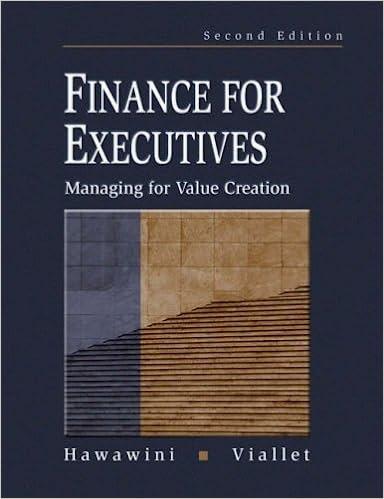Answered step by step
Verified Expert Solution
Question
1 Approved Answer
Business Problem - Risk of Loss FXB Bank is no stranger to risk. It trades on its own account and takes positions, occasionally massive ones,
Business ProblemRisk of Loss
FXB Bank is no stranger to risk. It trades on its own account and takes positions, occasionally massive ones, on various currency
exchanges. It also trades foreign exchange options with its customers. These accumulated option positions also contribute to the bank's
foreign exchange risk. While FXB intentionally takes on risk, the management of the bank and its various government regulators across
the globe require that it anticipate possible catastrophic losses and hold adequate reserves to maintain liquidity in those circumstances.
For this reason, they run a nightly risk of loss simulation against its current positions.
The positions of the bank are in various contracts and other instruments, some of them unique, complex, and highly tailored to their
clientele, and each of these would need to be modeled correctly for the simulation to be accurate. But for our first version of the
simulation, management is content with initially modeling all the bank's positions as a collection of the following instruments:
Foreign exchange spot position in a liquidlytraded direct market. For example, a EUR spot position is essentially a bank account
denominated in European Union Euros. Since FXB Bank is a dollarbased company, the value of these EUR deposits in USD is
determined by the current EURUSD exchange rate, which is determined collectively by the active participants in that market. We
have lots of current and historical data on these exchange rates and can easily gather the current exchange rate and data about its
volatility ie the standard deviation of the percentage change of the exchange rate from day to day
These liquid markets for FXB Bank are: These liquid markets for FXB Bank are:
EUR European Euro traded as euros priced in dollars EURUSD
GBP British Pounds traded as pounds priced in dollars GBPUSD also know as "cable",
JPY Japanese Yen traded as dollars priced in yen USDJPY
CHF Swiss Franc traded as dollars priced in francs USDCHF and
AUD Australian Dollar traded as AUD priced in USD AUDUSD
Data for each of these is given as:
current exchange rate either dollars per foreign unit or vice versa, depending on the market as indicated above and
volatility, which is the standard deviation of logarithmic returns
Threemonth foreign exchange options. These are contracts that allow one of the parties to force an exchange of two given
currencies at a given rate on the expiration date three months from now. Options are described in more detail in P: Foreign
Exchange Option and, indeed, we'll use the valuation function from that project. For our purposes here, FXB will approximate all it's
nonlinear foreign exchange risk as options that are struck atthemoney ie current spot exchange rate and expiring days from
now. Analysis
There are many methodologies for Value at Risk VAR analysis. One such analysis would be to replay historical foreign exchange daily
movements as percentage changes apply them to today, and then valuing our positions against that day's movements. The tenth worst
such day of playing four years of daily history about days would be considered our VAR. This is often called the historical VAR
method. This method has the advantage of being simple and takes into account implied correlations between the different currency
prices. Downside is that it requires daily historical data and doesn't model catastrophic events where the historical correlations break
down.
Instead, we will use a simplified version of what's typically called a Monte Carlo VAR method. We will assume each of the currency
movements is independent of the others and consider various scenarios where one or more of the currency exchange rates moves
dramatically up or down. For each scenario we will revalue our positions and then report on the scenarios where we saw the worst
outcomes for the bank.
For each of our currencies, we will do one of the following:
move it down overnight by three standard deviations,
move it down overnight by one standard deviation,
leave it flat overnight,
move it up overnight by one standard deviation, or Communication
Once the analysis is complete, we will communicate the results daily to the management and as required to the various regulators. Our
report will be in the form of a bar chart showing the worst scenario of overnight risk.
For example, from the test data set we'd get this result:

Step by Step Solution
There are 3 Steps involved in it
Step: 1

Get Instant Access to Expert-Tailored Solutions
See step-by-step solutions with expert insights and AI powered tools for academic success
Step: 2

Step: 3

Ace Your Homework with AI
Get the answers you need in no time with our AI-driven, step-by-step assistance
Get Started


